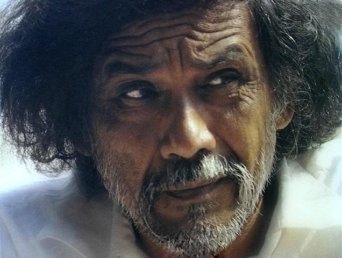- About
- Topics
- Picks
- Audio
- Story
- In-Depth
- Opinion
- News
- Donate
- Signup for our newsletterOur Editors' Best Picks.Send
Read, Debate: Engage.
| topic: | Arts |
|---|---|
| located: | Mexico |
| editor: | Magdalena Rojo |
I never met Francisco Toledo in person, he rarely spoke to journalists; he did not even come to his own exhibition openings anymore. However, somehow he was always present in Oaxaca City, Mexico - through his art and more so, through all the cultural spaces that were created thanks to his social activism.
Francisco Toledo, by many regarded as the Mexican's most important artist of our times, passed away on September 5 at the age of 79. Though he will be remembered for his extraordinary and expressive art that was inspired by his Zapotec heritage, at the moment, Oaxacans are also giving thanks to the person who changed the capital of the Southern Mexican state.
"Toledo has a vision that is long-term and way bigger than just solving a problem for this moment," Daniel Brema, a director of Arts Center of St. Augustine told me back in 2017.
It is due to Francisco Toledo’s personality, called "El Maestro” by Oaxacans, that Oaxaca City is full of arts and spaces where artists of future generations can continue creating. For example, the Arts Center of St. Augustine mentioned above used to be a textile factory in the close-by village of San Augustín de Etla. Once the factory was closed down, Toledo came with an idea to create an arts center in the abandoned building. As the factory is in a forest where Oaxaca City gets its water from, the center had to be ecological. In cooperation with other artists a space was created where artists meet and the public comes to enjoy art and nature. From writing courses in indigenous languages to an organic paper making factory, all activities that happen in the Arts Center of St. Augustine have in mind conserving traditions and preserving a healthy environment.
The botanical garden in the downtown of Oaxaca City was supposed to be a parking lot and a hotel, if it was not for Toledo's civic campaign. Oaxacans tell me stories that it was Toledo who fought against the McDonald's chain restaurant opening at the main square Zócalo. Similarly, he ran campaigns against many other development projects.
Toledo also opened his colonial house in the downtown of Oaxaca City and made it a Graphic Arts Institute of Oaxaca that includes the most extensive public libraries with art books across Latin America.
The art spaces that Francisco Toledo helped create due to his own art selling well, are open to the public, without entrance fees. Toledo made art accessible to everybody.
However, art is only one aspect of the Oaxacan spirit. Another one is community. Community life is an integral part of who Oaxacans are and thus all the places that have Toledo's touch are places for the community to meet, share and co-live. They are places where people from outside of Oaxaca can experience inclusion. At the same time, they are places where indigenous people and their culture stand out.
The world of Latin American art would not be what it is without El Maestro, Oaxaca would not be what it is without Toledo. The world needs more Toledos.
